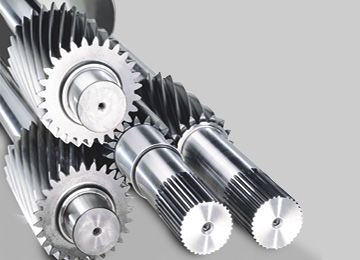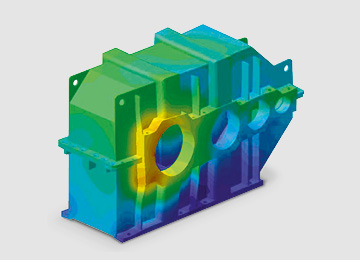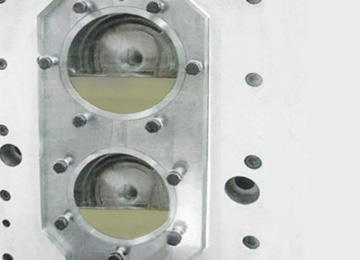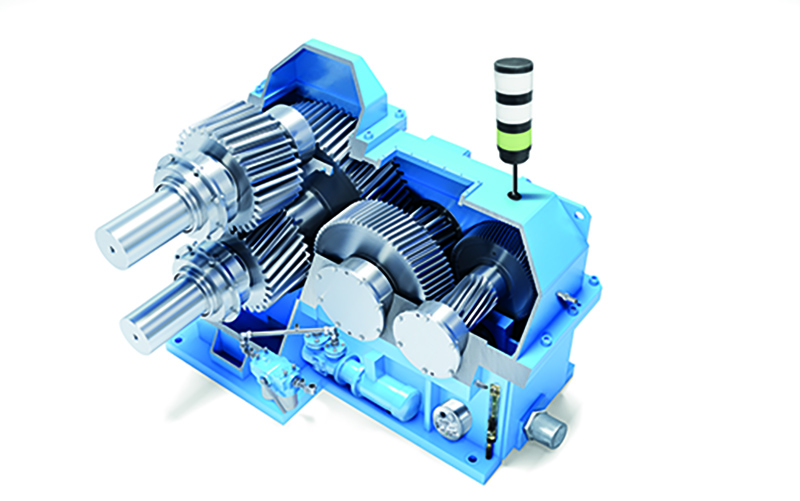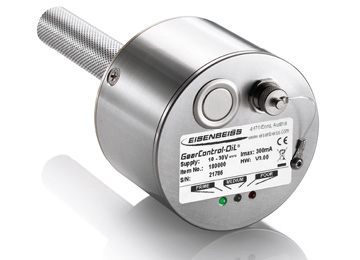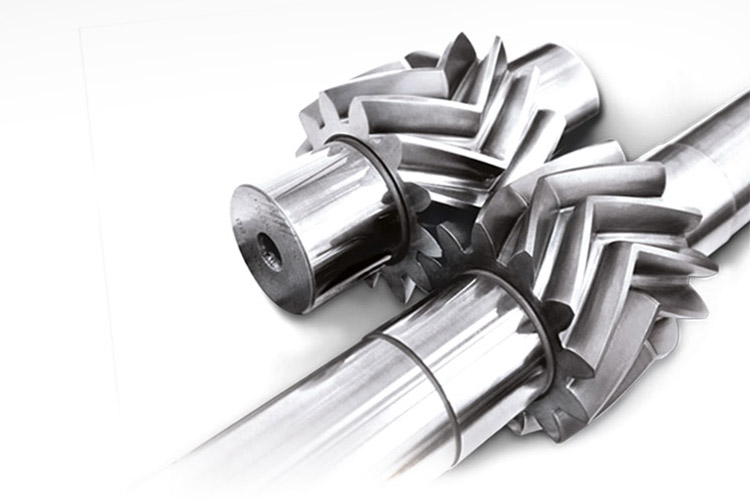
R&D AT EISENBEISS
LEADING WITH INNOVATION –
NETWORKED WITH THE FUTURE
That is how we create energy-saving gear systems with the highest level of efficiency, compact special gear units and ingenious torque distribution systems featuring the latest gear tooth technology as well as innovative sensor systems and mechatronics solutions.
The following pages present a selection of our innovative ideas and solutions.
100% CONTACT PATTERN UNDER LOAD
Modern high performance gear units develop enormous forces that deform the gear shafts and teeth flanks. We understand these deformations and correct the height and width dimensions of the gear teeth accordingly.
This has the advantage of eliminating edge contact and premature wear while reducing running noise.
Our areas of expertise:
- Deformation and load distribution calculation
- Continuation of load capacity calculation
- Global and local stress
- Operational stability, service life calculation, reliability and availability
- Gear dynamics, gear noise, vibrations, torsional oscillation simulation
INNOVATIVE GEARING TECHNOLOGY
We continue to work on gearing development because we know what it means to meet the needs of our customers in terms of load capacity, oscillation suppression and efficiency.
Your benefit: smaller gearboxes with higher power
We make no compromises when it comes to designing gear teeth. We meet the needs of our customers in terms of load capacity, oscillation suppression and efficiency.
Gear tooth factors:
- Effect of tooth geometry on load capacity, efficiency and noise
- Special gearing
- Conical spur gears
- Real herringbone gearing
GEAR CONCEPTS AND TORQUE DISRIBUTION SYSTEMS
The demand for more compact gear units leads inevitably to higher power densities. In order to transmit these reliably, the load has to be distributed between several teeth engagements. The quality of such torque distribution systems is determined by the design of the gear unit as well as the interaction of manufacturing tolerances, material strength, bearing play and material deformation.
The advantage is the smallest gear units with the highest torques
- Distribute load to several powertrains
- Strength, deformation
- Movement of gear components
- Bearing play
- Various torque distribution concepts
- Torque increase
- Limited manufacturing capabilities
- Weight reduction, size reduction
MECHANICAL STRUCTURES
Gear casing deformation has a negative effect on load distribution as well as on noise and wear. Eisenbeiss gear casings have been implemented using solid frame structures. As a result, the housings have a high level of stiffness in the directions that load is transmitted. At the same time, the parts of the housing that are not under load are more lightweight.
The advantage is a reduction in weight and an increase in stiffness.
That is why Eisenbeiss gear housings have been developed based on solid frame structures that can absorb these forces and offer exceptional stiffness in the directions that forces are transmitted. In addition, the parts of the housing that are not under load are more lightweight. This saves a lot of weight.
GEAR LUBRICATION – THE OIL IS WHERE IT IS NEEDED
Using low pressure, gravity and cascade lubrication, the oil is where it is needed for lubrication. As a result, oil splash losses are reduced, no external cooling is required and oil quantities are reduced to a minimum.
The advantage is an extraordinary improvement in energy efficiency
- Tribology and elasto-hydrodynamics
- Calculating the lubricant film thickness
- Lubricant viscosity
- Friction, power losses, wear
- Influences on efficiency
- Energy efficiency
- Thermal management
- Mineral oils versus synthetic oils
- Low friction, extended oil life, wider temperature ranges with synthetic gear oils
- Oil change intervals
- Effects of water, air, contamination in oil
GEARCONTROL – THE INTELLIGENT GEAR UNIT
Under the name GearControl, Eisenbeiss offers a unique and extensive gear control system with the following features:
- Condition monitoring (current condition of gear components)
- Function monitoring (ensuring lubrication, filtering, heating and cooling)
- Perfect servicing (maximising the service life through optimum operating conditions)
- Protecting resources (optimal use of resources through condition based maintenance)
GearControl links existing development and tribology models with current operating data. As well as enabling correct assessment of the current operating conditions, it also detects optimisation potential for maximising the lifespan of the gear.
Load capacity calculation for the lubrication film, service life calculation and operating condition-dependent oil change intervals are integral components of GearControl.
GEARCONTROL OIL – THE SMALL SENSOR AGAINST MAJOR DAMAGE
Oils change their lubrication properties to a varying extent, depending on the application and operating conditions. For this reason, the oil change intervals specified for industrial applications tend to be rather conservative in order to avoid oil-related gear damage.
GearControl-Oil is a multi-parameter sensor for:
- Temperature
- Relative moisture
- Electrical conductance
- Relative permittivity
- Transmission
Because not every gear unit is in the immediate vicinity of suitable infrastructure (power supply, bus connection), a battery pack and LED traffic light indicator is available for applications like ski lifts and cranes. The battery can last for up to 2 years.
The intelligent assistance system GearControl-Oil® is the ideal aid to ensure at all times that the oil is in a satisfactory condition.
Eisenbeiss is a member of the German Research Association for Drive Technologies (FVA). This gives us access to a huge fund of state-of-the-art knowledge relating to the calculation and simulation of gear tooth technology, tribology, metallurgy, testing and manufacturing technology.
Eisenbeiss partners a number of Austrian schools, colleges and universities to provide training and education. We offer seminars, work experience, topics for diploma and master theses and we award research and development projects.
Current topics for diploma and master theses:
- Operational stability and service life calculation
- Innovative sensor technology



